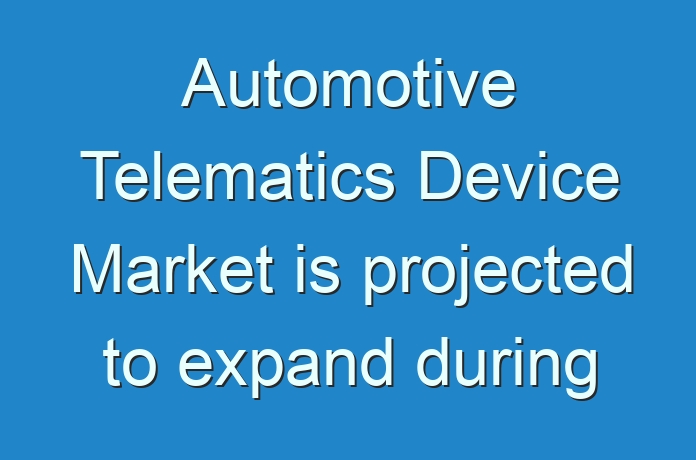
- Rise in dependency on data in modern age vehicles has fueled the adoption of connected technologies for better vehicle safety, maintenance, and operation
- The automotive telematics collects data through a small device installed in the vehicle itself. This device collects, stores, and transmits different types of information relating to the vehicle’s performance, condition, and usage for various applications such as tracking vehicles, analyzing the driving patterns of drivers, predicting failure and maintenance of parts, and several such other applications.
Key Drivers of Automotive Telematics Device Market
- Industrialization and trade activities have been rising consistently across the globe for the last few years. World Trade Organization stated that global trade activities rose by 1.2% in 2019. This rise in trade activities has increased the demand for commercial vehicles for transportation of goods. These growing number of commercial vehicles create a requirement for telematics devices to perform efficient fleet management. Apart from updating fleet managers with location of vehicles, telematics systems also streamline communication, job dispatch and routing, and record and transmit information on the vehicle’s motion, engine performance, speed, and driver conduct. Thus, an increase in fleet of commercial vehicles is fueling the global automotive telematics device market.
Request for a sample:
https://www.transparencymarketresearch.com/sample/sample.php?flag=S&rep_id=70458
- Insurance companies are modifying their policies and premium rates through the use of IoT enabled sensors installed on vehicles, which transmit data related to vehicle operation. These insurances are called as ‘Pay As You Drive’ type of insurance and their demand is rising, as it determines the premium based on miles driven, driving performance, route of travel, and other driving parameters. Increase in novel applications are further driving the global automotive telematics device market.
Impact of COVID-19 Pandemic on Global Automotive Telematics Device Market
- The COVID-19 pandemic disrupted automotive supply chains and creating a shortage of raw materials and components. The pandemic has severely affected the chip manufacturing hubs of the world creating a global shortage of electronic chips, which in turn is restraining the global automotive telematics device market. Furthermore, the lockdown imposed by several governments hindered cross-border as well as local trade activities worldwide, thus decreasing sale of commercial vehicles and miles driven by these vehicles. This has lowered the consumption of telematics solutions from OEMs as well as aftermarket users.
Europe and North America to Hold Significant Share of Global Automotive Telematics Device Market
- North America and Europe dominate the global automotive telematics device market due to a well-established and prominent trucking industry in these regions. Moreover, governments in these regions have strengthened the safety and emission regulations of vehicles. Telematics devices assists vehicle owners to monitor the emission levels of their vehicles and perform predictive maintenance to avoid mechanical failure related accidents. European has mandated eCall in all the cars sold across Europe, which transmits location and sensor information to emergency contacts. These favorable regulatory transformations are further propelling the automotive telematics device market in North America and Europe.
Ask for brochure:
https://www.transparencymarketresearch.com/sample/sample.php?flag=B&rep_id=70458
Key Players Operating in Automotive Telematics Device Market
The global automotive telematics device market is highly concentrated due to the presence of top manufacturers. A few of the key players operating in the global automotive telematics device market are:
- HARMAN International
- ID Systems Inc.
- Lanner
- Octo Group S.p.A
- Omnitracs LLC
- Preh GmbH
- Robert Bosch GmbH
- Satways Ltd.
- Teletrac Navman US Ltd.
- TomTom International BV
- Trimble Inc.
- Verizon
Read Latest Press Release By TMR:





